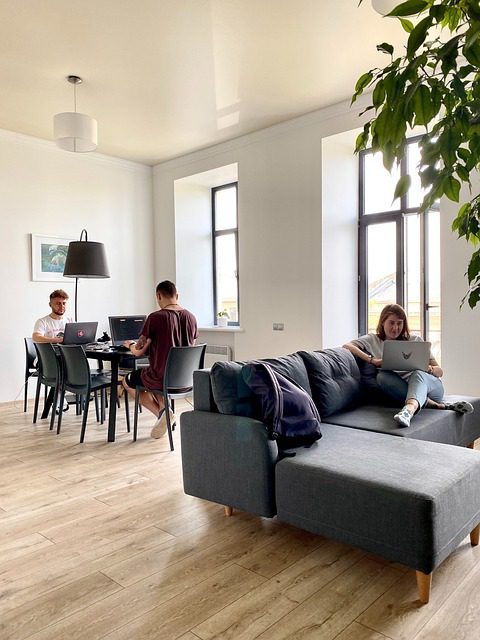Co-living – a combination of community living and co-working spaces- is becoming increasingly popular lately. This is mainly because this living trend allows people to have their own space that’s still being shared with other community members. It can be defined as fractional ownership that is occupied for short periods (like in common housing) or a community-driven sharing system.
Co-working spaces, or co-living as it is called from time to time, are a place to live and work because it is your home. You are always in the same community with people you can trust and share experiences with. There are plenty of different places where co-working might occur. For example, in countries like New Zealand, the trend is just starting to take off, but in Germany, for example, it has already been a reality for years.
New social phenomena have appeared and developed more often for the last couple of years. One such phenomenon is co-living – living in a shared apartment with a roommate but without one’s room. This new trend is considered by many as an alternative to homeownership and has experienced a significant increase in popularity. Below, we will try to give you a comprehensive co-living guide from sharedeasy.club.
Table of Contents
What Is Co-living And How Does It Differ From Co-working?
We’ve been helping digital nomads build their online businesses for the past eight years. And now that more and more people are choosing to make a living on their laptops and tablets rather than sitting in an office, we’ve found ourselves needing a new way to expand.
A co-living space (also called co-living) is a shared house or apartment where residents share one or more communal spaces. More often than not, residents also share the “kitchen and living room.” While an investment company manages some communities, residents have the responsibility to organize themselves in others.
What Are The Advantages of Co-living?
Co-living is the new trend in housing. It has gained popularity in recent years, mainly due to a rapidly growing number of young entrepreneurs who invest both their time and money in their businesses and therefore don’t need or want living spaces from ordinary hotels. We believe that co-living should not be limited to several residential houses but implemented as an alternative for all types of housing, even for people without a business.
Co-living spaces offer you the flexibility of short-term housing and the benefits of living in a longer-term residential building. It significantly reduces your monthly overhead by enabling you to share bills like rent, internet, and electricity. The shorter lease term enables you to try cities without committing to long contracts. At the same time, you also get to meet people from different backgrounds and make new friends as your neighbors are regularly changing throughout your stay.
Many people prefer to start their careers in a trendy and cheap city like Berlin, London, or New York. This way, they can enjoy some of the greatest advantages of a big city but still save money on their housing costs. Some cities in Europe are much more expensive than others – this is where co-living spaces come into play.
Common living spaces cram together multiple residential units in a single building to provide cost-effective housing and connect residents. The name “Col-iving” indicates its characteristic concept of bringing together various people into one space, thus enabling a social lifestyle fully integrated with the community.

What about the disadvantages?
Cultural clashes in the co-living spaces are quite common as people from different backgrounds try to live together and accommodate each other. The occasional cultural differences do not always lead to a serious problem. The failure of flatmates to get along with each other is usually due to their differences rather than their economic status.
How To Find The Right Co-living Space?
Co-living is a form of sharing spaces between roommates and housemates. While you share your home with people you trust, this is like renting a place by yourself in a residential building with your neighbors, who also live independently. It allows the tenants to save on expenses and costs while having more space than they would have in an apartment or small home.
Dreaming of yourself eating and working out, biking to work, or hanging out with friends all day long and still being able to come back home after a hard day’s work? What if you could do all these things in the same place? That’s what living in a co-living hub is all about. You don’t have to sacrifice location for community or vice versa when you live in a co-living space.
A co-living space may be an apartment building, house, or a group of one-bedroom apartments. The shared living spaces include kitchens and common areas such as living rooms, restrooms, and laundry rooms. These spaces are used by everyone and are not private, which most people would expect from a co-living opportunity. Common kitchen appliances such as ovens and stoves are usually available on sites where you can rent a private kitchen.
Final Thoughts
Modern co-living spaces offer an alternative to hotel and hostel accommodation. They allow the user to enjoy city life, internet access, concierge services, and a full kitchen, but in a shared space and at a lower cost than an apartment or hotel room.
Featured Image by rabkina from Pixabay




